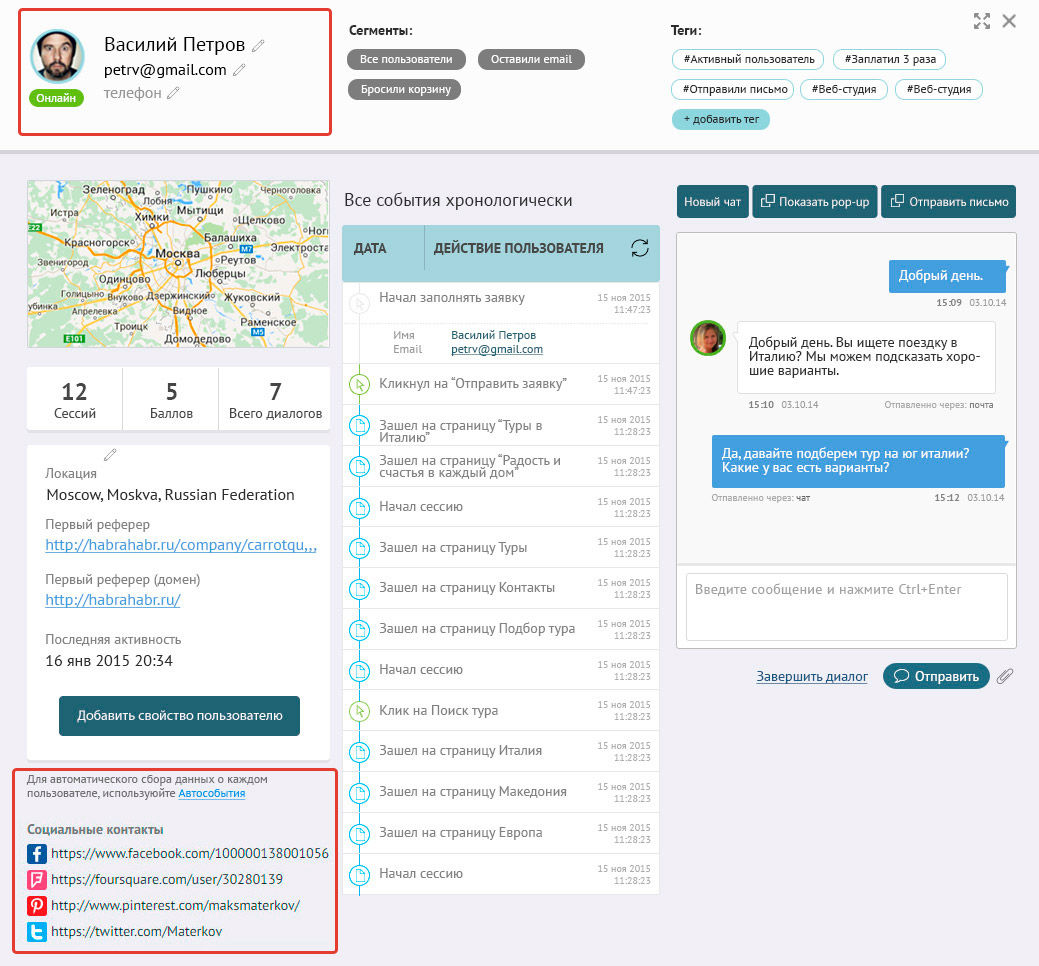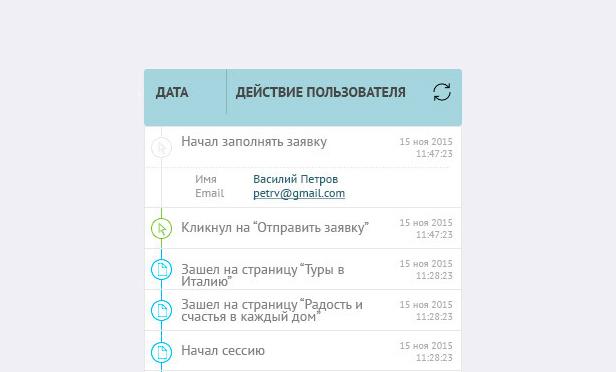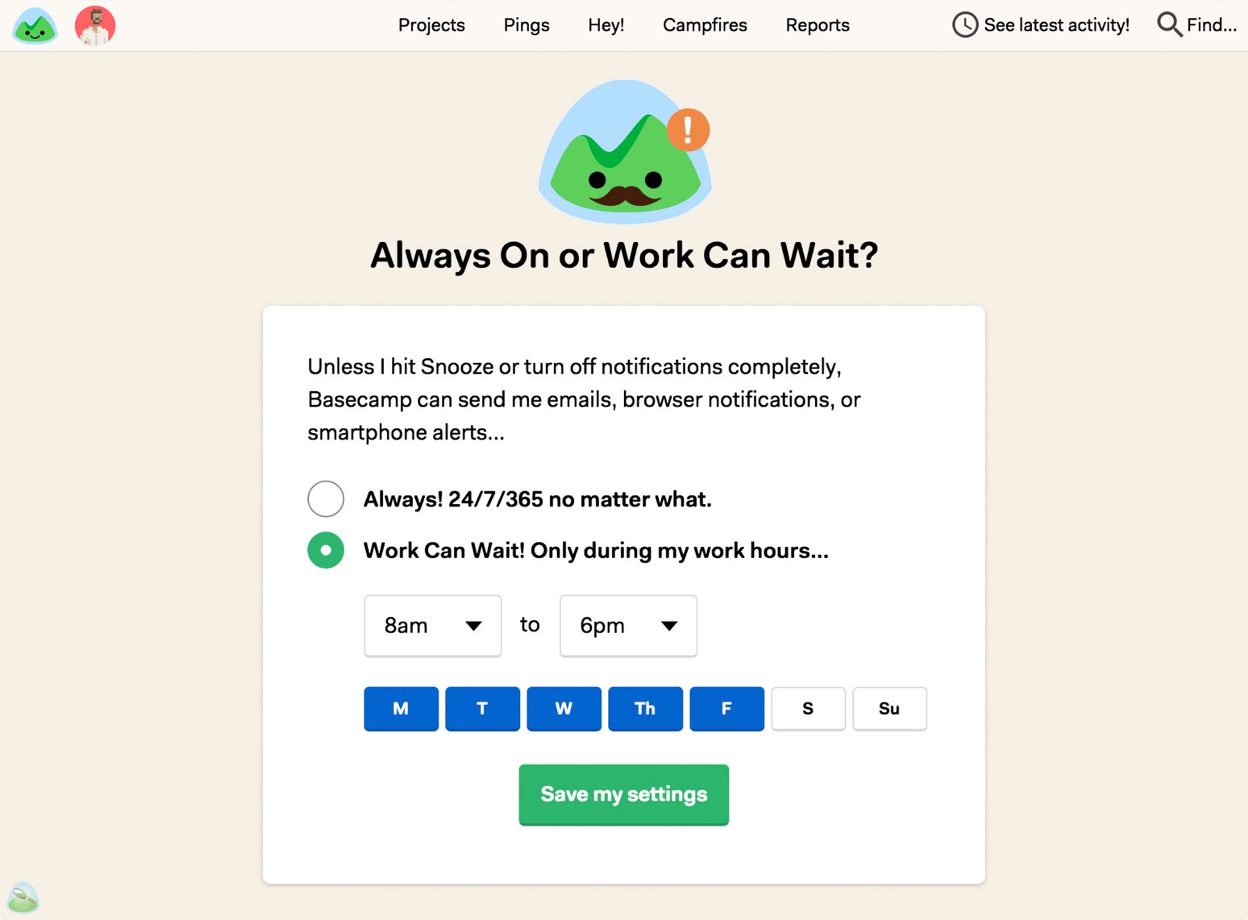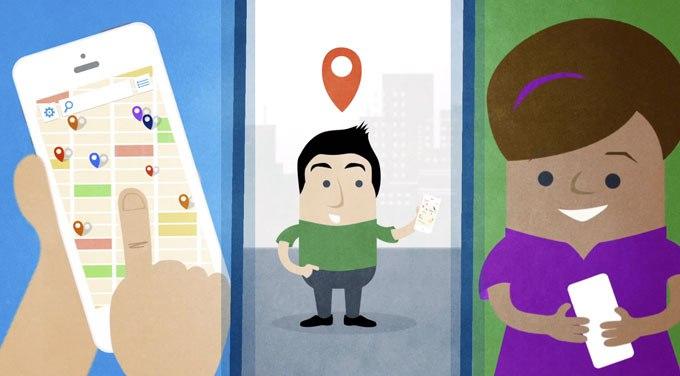How smart notifications will soon change the world and the whole business

About why today's notifications are only harmful. What algorithms already exist for the maximum targeting of notifications. What to pay attention to and how to be ready for serious changes.
Alex Potrivaev - Product Designer at Intercom shares his pain:
My phone vibrated. I'm somewhere in Iceland. To my car and the nearest humanity more than 10 miles. Smartphone charge on the last legs. I quickly turn on the Internet to plan a route on Google maps and see: “Spotify added 2 new songs to your playlist. Right on time, damn it, and I need it, right here and now))). Periscope offered me “@kayvon broadcasting”, 2 new letters in my mail, a new follower on Twitter, notifications from the channel in Slack.
')
In the amount of 9 notifications. Nothing useful at that time. Situation: I, some kind of wilderness, the last 2% charge on the phone, a bunch of useless notifications, a weak internet signal and an insane need to use maps.
In fact, the same approach was used in the early 2000s, and since then a lot of time has passed. Yes, many companies, startups, manufacturers and entrepreneurs are discussing the topic of notifications. They agree that it is time to change the mechanics and principles of work, the question is: how? Let's see how it will be implemented and what developments are already there.
Our data is all
Algorithms that analyze massive databases solve everything: from what we see in Google or Yandex search to the news feed on Facebook. Recently, self-learning algorithms that are actively used in Facebook and Google Now. Yes, smart algorithms just began to appear, but, fortunately, this data should be enough for smart, really useful notifications. We recently discussed how the communication pattern of users on the Internet has changed and how this has affected online consultants .
personal information
The popularity of social networks has made the process of distributing personal data easy and simple: why force someone to register, if you can simply provide an opportunity to log in through a social network? So you also automatically find out the name of your client.
In our case, it’s enough to enter an email, and the Carrot Quest service already automatically pulls in the data about the user - his name and contacts in social networks. This is public user data that is legally available. The main thing is not to confuse it with social phishing, here is an article in the topic: Yandex will be fighting with sites that use social phishing .
Here is how the visitor data look in our service :

The user did not even register, but simply left his email in a chat or any form on the site, and we already know not only about his actions and where he came from, but also his name and social contacts. networks.
Behavioral Information

Even if the site does not collect additional information about the user, you can learn a lot from the behavior history of each user. When do they usually go to the site? How much time is spent there? Is there any relationship between the time of day and the execution of the target action? You can even follow the visitor online and, if anything, ask him a question or help with the purchase (any other action).
Information about the ecosystem surrounding the client

It is important to understand:
- What are the other interests of a particular user?
- What other products does he use? How exactly does he use? Are there any similarities?
- What else interests him?
- Where is he?
This can be achieved by combining customer information. Already, by the way, there is a possible solution to the problem with personal information. In a recently announced feature from Google with a smart auto answer, people are not allowed to read private correspondence. On the other hand, the algorithms can both read and segment the user.
Truly smart notifications
If we have all the possible information about the user, how should smart notifications look like? At a minimum, they would be truly helpful, personalized, punctual and accurate; in other words, they would always be the topic.
Notifications that come at the right moment

Instant notifications are not always in place. Recently, Basecamp3 (an online service for project management, collaboration and task setting) has released an update, which made it possible to choose the time when notifications can arrive.
For example, you definitely do not want to receive a notification from your colleague from another time zone during your date. Notifications, at the wrong time - nowhere worse. Inappropriate signals not only do not attract real attention, but irritate the addressee and distract. The user immediately shifts all these emotions to the company.
Notifications of the future will come at the right time automatically. The notification mechanism will take data from the context, find out at what time you are more or less available and read the notification from the service, and at another time you will be able to enjoy your evening date to the fullest.
Smart location

Geolocation is essential for understanding the context and availability of the user. If someone recently flew out of Russia, this is not the best time to send him a notice of a one-day sale from IKEA in Moscow. Many applications already use geolocation for their own purposes. For example, Foursquare warns you that you have visited a new place and sends useful information about this place. And many task managers automatically remind you of tasks that are best performed at a particular point on the map when you find yourself there.
Smart Segmentation
Like any system built on guns, notifications are quite a delicate and complex tool. If the service uses too many notifications, users gradually get used to it and simply close them. Even if the appeals are useful and interesting - it does not matter. That is why segmentation is becoming more and more important.
Remember how Facebook groups the same notifications, for example, who liked your photos. It partially shows the names and the number of people who like it, and if the user himself wants, he can expand detailed information.

If you develop this idea, you can do this segmentation. If you often get no more than 10 likes for each photo, then you may want to know about each of them. Also, probably more you will be interested in notifications from close friends and relatives, and maybe from various famous personalities. Well, for example, if Mark Zuckerberg comments on your post, you would want to know about it right away, right?

Clever reaction
Yes, we are all unique, but it’s unrealistic to adapt to everyone. You have to make compromises. Smart notifications are more likely to win the user's attention. Depending on how you handle the content, you will be able to offer all new and interesting options. How do you usually react to new likes? Are you browsing or just barely touching them? Or do you thoroughly review each notification? Depending on your mode of action, notifications may be adjusted.
Smart targeting
Let's look at our example of personalization, how we allocate an audience for a specific task. We send a targeted message to exactly those users who can give a valuable answer to our question. For example, when we created the “Live” section, for its evaluation and improvement, we selected a segment of those who had already managed to try “Live”. They wrote to them and found out if they had any difficulties in their work and what benefits they got for themselves.
This process can also be automated if you want to ask people constantly in the process of some time. The man did the action - you sent him a letter (showed a pop-up window or chat). A message sent to the right people at the right time has a high conversion per response and provides a truly valuable feedback. With all this information, notifications can become truly valuable and smart, will focus on specific users, and others will not reach.
Smart notifications against the notification system
Smart notifications are more like a note from your assistant. Compare this with the system notification that appears at the top of the screen. Should they be the same persistence? Should they have the same size and personalization?
People are inherent in experiencing such a psychological phenomenon as pareidolia: the ability to notice human traits in ordinary everyday objects. We see faces in obalkah, animals in cartoons speak and act like people, and robots in science fiction look like humanoids. Similarly, we treat Siri, SlackBot and Google. Notification from the bot is much more interesting to people, since the bot has a personality, and the notification sounds like a human being. In truth, the messages from the bot become more conducive to the conversation. Here is a comparison of what was a year ago and what is happening now in Glass:

The future of smart notifications
Obviously, the notifications will change soon. They are distracting. They do not like. However, at the same time, we have all the capabilities to create smart notifications. There are services that use the collected data for smart notifications, they are already trying to make their notifications really useful and suitable in time. What we depend on, we try to implement in our service. Behind personalization and automation is already present, there is no time to postpone it for the future.
With pleasure, the team of Carrot Quest - a service that knows all the information about each visitor on your site and taking into account this data automatically leads them to purchase (using eCRM, online chat, pop-up windows and email newsletters).
Some information was translated from the Intercom blog.
Source: https://habr.com/ru/post/299044/
All Articles